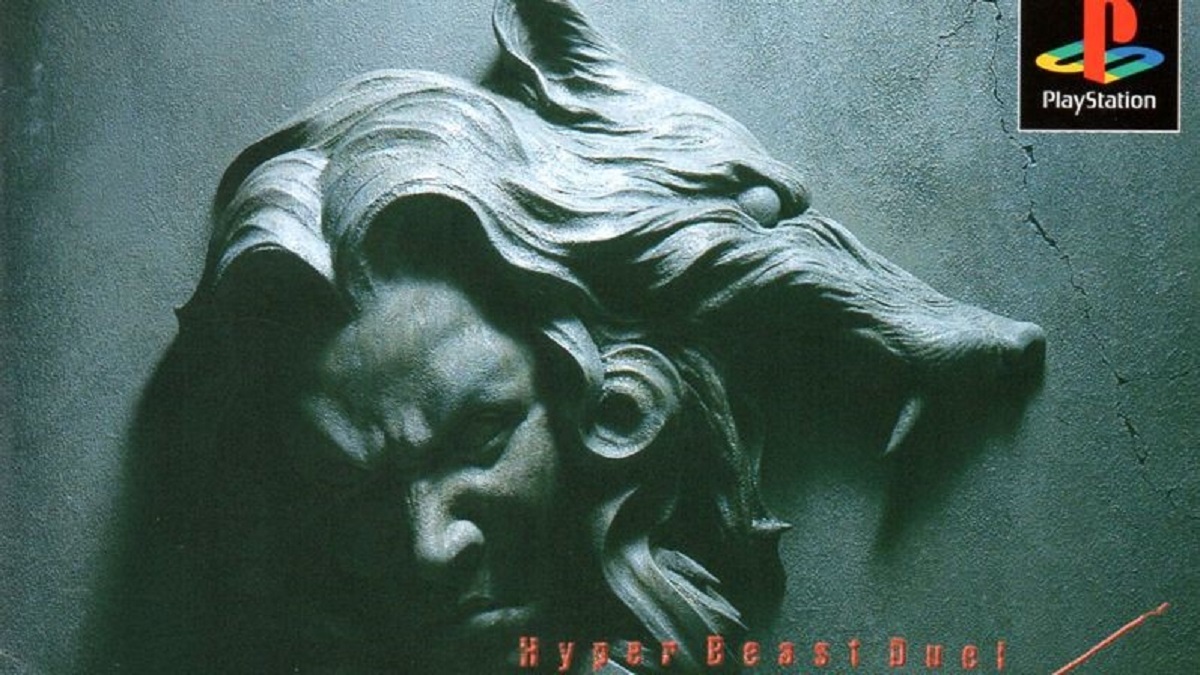There haven’t been many fighting games that I’ve really connected with. I’m not a competitive person by nature, and it’s a genre that is built around competition. The two times I really got into fighting games were a rivalry with my brother-in-law around Street Fighter II and another with a college friend over Soul Calibur 3. I still play them with some regularity, but I just have a hard time falling into them and continuing after beating the arcade mode a couple of times.
1997’s Bloody Roar was recommended to me a few times, but I only now got around to playing it. This is despite owning a copy of it, given to me by a friend who was cleaning out their basement. If I had known how firmly I would click with it, I would have definitely gotten around to it sooner.
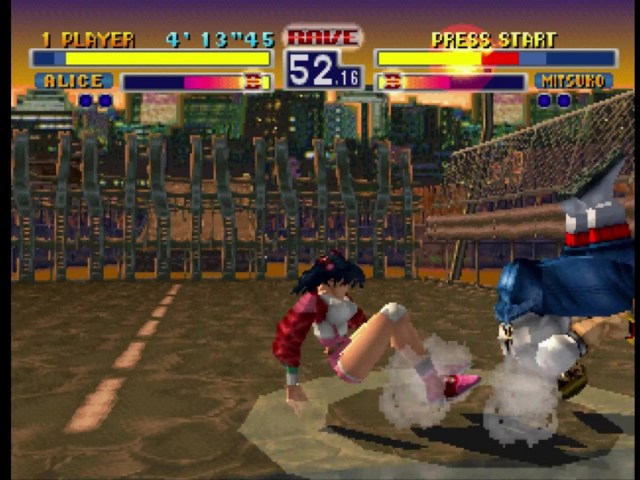
A bloody good time
Bloody Roar was published by Hudson back in 1997 and developed by Raizing Co, a Japanese developer founded by former members of Toaplan. It was strangely released in North American arcades as Beastorizer, but on PS1 as its Japanese name of Bloody Roar.
It’s worth noting that in arcades, it was released using the hardware commonly (but not officially) known as the Sony ZN-1. Why is that important? Well, the Sony ZN-1 is essentially the arcade version of the PlayStation. I’m not quite familiar enough to be able to confirm that Hudson didn’t make any of their own custom tweaks to the arcade hardware, but the PS1 port is, under mild scrutiny, pretty much exactly the same as the arcade version. It just has some home console tweaks, like a new cinematic intro that looks dopey in that very specific early-3D way.
Speaking of early-3D, Bloody Roar landed during the 3D fighting craze that followed in the wake of 1993’s Virtua Fighter. It’s very similar to other games of its particular sub-genre. It uses three buttons (five if you have sidestepping turned on), and each level is a square stage. However, you can only ring out opponents if wall-breaking is turned on. The walls can either be broken by finishers only or just by bashing your opponent into them enough times. It’s your choice.
However, I think the official rules lean toward finisher breaks only. If your strategy in other games leaned toward ring-outs, then you’ll have to come up with a new technique.
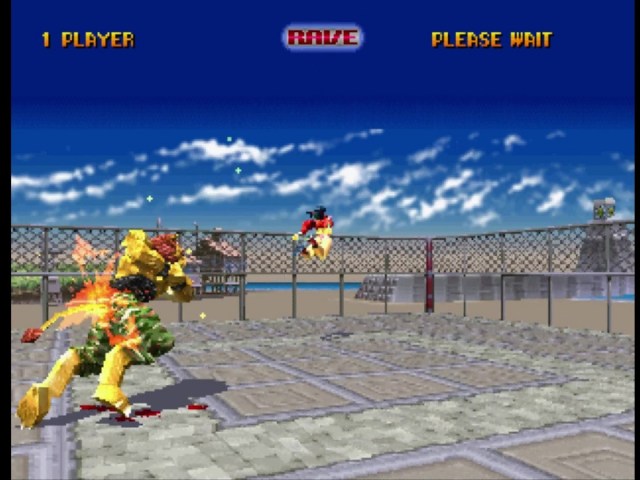
Select your fursona
Oh, I haven’t even gotten to Bloody Roar’s main hook. Everyone’s a furry! All the fighters can transform into anthropomorphic animals, and that’s where the main strategy comes from. You have a gauge that fills as you attack and get attacked, and you choose when to transform into beast mode. Once you’re in your fursuit, your character is more powerful, heals some of the damage caused to them, and gets a whole new set of moves. It gives you a major advantage.
The strategy comes from when to use this ability. Once you’re in beast mode, your gauge becomes a bit like a second health bar. It depletes as you take damage, and once it’s empty, you’re transformed back into a boring fleshy human. There’s a risk and reward to using it, and likewise, when your opponent unleashes their fur, then it’s time to get aggressive as you try to knock them out of it. There’s a cooldown period before they can transform again, so that might be a good chance to turn the tables.
It’s interesting because while the combat is simple and easy to learn, the strategy of transformation keeps things interesting. There are lots of combos to learn, and the fighting is very impactful and flows well. For a game that only uses two buttons, with another being unlocked via transformation, there’s a great deal of depth to be had.
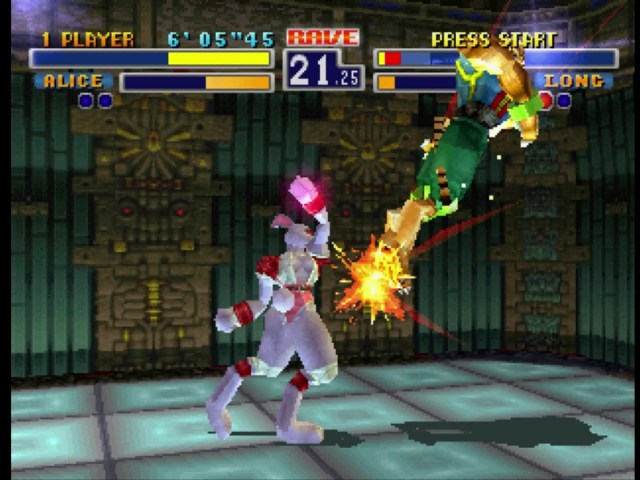
Go ask Alice
I wound up choosing Alice as my main. This is largely because she transforms into a bunny, an animal I have an affinity for. She clicked with me immediately, helped by the fact that she has a brutal spinning roundhouse kick and one of her grabs has her perform a Frankensteiner on her opponent.
Bloody Roar has a standard arcade mode, as well as versus and survival. It’s pretty standard for the time period. The story involves the Tyron Corporation, who created the “Zoanthropes” as weapons. They plan on brainwashing them, but a bunch of them break out, and that’s the cast of Bloody Roar. Like many fighting games of the era, the story doesn’t play into the game much. You get an end credit cutscene that you may or may not understand based on whether or not you read up on the background.
Strangely, at its default difficulty, I found Bloody Roar to be kind of easy. Most fighting games start you off against an opponent that barely competes before building you up to a big cheap boss that can read your mind. However, your first fight in Bloody Roar isn’t a complete pushover, and the last fights aren’t much harder. The boss isn’t entirely easy, but they aren’t cheap either.
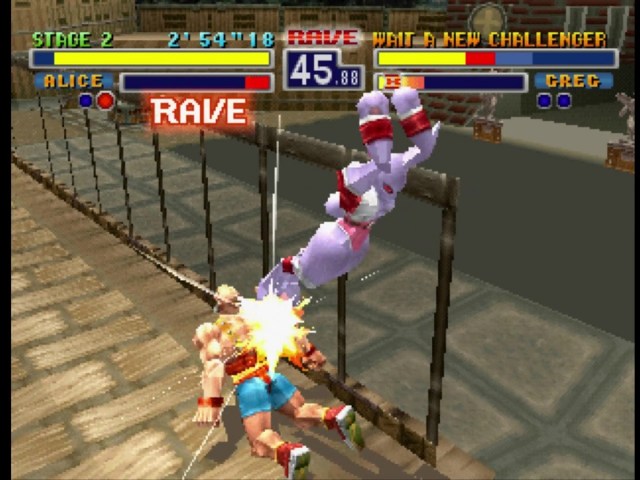
Follow the white rabbit
A lot of this kind of points to Bloody Roar being intended for competitive play. Unfortunately, it was before the time when online competition was really a thing, so I’d have to rope someone into a rivalry. Maybe someday.
It’s unfortunate because I clicked with Bloody Roar in a way that’s rare for me with fighting games. I want to build my skill with it and get better, but without direct competition, it’s hard to find the motivation. At the very least I have the rest of the series to play through. I’ve already managed to grab a copy of 1998’s Bloody Roar 2. There are five games in total for the series, with it ending completely in 2003.
The company that owns the license, Hudson, went bust in 2012, with all assets being bought up by Konami. They’re not the worst possible rights holders at the moment, but they certainly rank. I would be far beyond jazzed to see a compilation or new title in the series, especially one with online play. At the moment, you can at least grab the game using the PlayStation store on PS3 as part of the PSone classics lineup. That’s something.
For other retro titles you may have missed, click right here!
